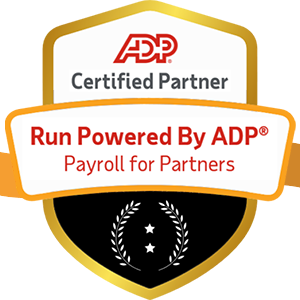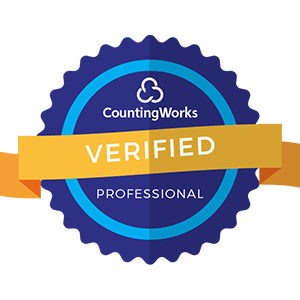
The Resilience Imperative: Organizations with crisis-prepared HR functions recover 73% faster from disruptions and maintain 89% higher employee retention during turbulent periods. Companies investing in HR crisis readiness report 64% better business continuity outcomes and 52% lower operational costs during emergencies. Yet only 34% of organizations have comprehensive HR crisis management capabilities, creating significant competitive advantages for those who build resilient people operations.
The business landscape has fundamentally shifted toward continuous volatility where disruptions are not exceptional events but regular occurrences requiring systematic preparation and adaptive response capabilities. Traditional approaches that treat crisis management as episodic activities have proven inadequate for navigating persistent uncertainty that affects workforce stability, operational continuity, and organizational resilience.
Modern HR leaders must architect people operations that function effectively regardless of external conditions while maintaining employee trust, engagement, and productivity during periods of intense stress and change. This transformation requires moving beyond reactive crisis response to proactive resilience building that embeds adaptive capabilities into every aspect of human resources management.
The COVID-19 pandemic demonstrated how quickly stable business environments can collapse, forcing immediate transitions to remote work, modified compensation structures, and entirely new employee support requirements. Organizations with robust HR crisis management capabilities adapted rapidly while maintaining workforce cohesion, while unprepared companies struggled with employee departures, productivity declines, and operational failures.
Future-ready HR functions recognize that uncertainty is permanent and build systematic capabilities for managing continuous change while preserving organizational culture, employee well-being, and business performance through any disruption scenario.

Effective HR crisis management requires comprehensive frameworks that address prevention, response, and recovery phases while building organizational resilience that strengthens with each challenge encountered.
Comprehensive risk identification evaluates potential disruptions across multiple categories including natural disasters, economic downturns, technology failures, regulatory changes, and social unrest that could affect workforce stability and operational continuity.
Scenario modeling develops detailed response plans for various crisis types with specific triggers, escalation procedures, and resource requirements that enable rapid mobilization when situations arise.
Impact assessment quantifies potential effects of different disruption scenarios on employee productivity, retention, compensation costs, and business operations to prioritize preparation efforts and resource allocation.
Vulnerability analysis identifies organizational weaknesses in people operations including single points of failure, skill dependencies, and system limitations that could amplify crisis impacts.
Executive crisis teams bring together senior leaders from HR, operations, communications, legal, and finance to provide coordinated decision-making and resource allocation during emergency situations.
Clear authority structures define decision-making hierarchies and approval processes that enable rapid response while maintaining appropriate oversight and accountability during high-stress situations.
Communication protocols establish internal and external messaging procedures including employee notifications, stakeholder updates, and media relations that maintain transparency while protecting organizational interests.
Escalation procedures provide structured approaches for elevating issues and accessing additional resources when standard response measures prove insufficient for managing developing situations.
Modern crisis-proof HR relies heavily on technology systems that maintain functionality and accessibility regardless of physical workplace disruptions or infrastructure limitations.
Cloud migration ensures that HR systems remain accessible from any location while providing automatic backups and disaster recovery capabilities that protect against data loss and system failures.
Multi-factor authentication and encryption protocols secure employee data and HR systems while enabling remote access that maintains privacy and compliance standards during crisis conditions.
API integration connects HR platforms with business applications to maintain workflow continuity while enabling rapid deployment of new tools and capabilities as situations evolve.
Real-time synchronization ensures that employee records, payroll systems, and benefit administration remain current and accurate regardless of where HR staff are working or what devices they're using.
Unified communication systems provide voice, video, messaging, and collaboration capabilities that maintain team connectivity and operational coordination during office closures or distributed work arrangements.
Mobile-first design ensures that employees can access critical HR services and information through smartphones and tablets when computer access is limited or unavailable.
Automated notification systems deliver important updates and instructions to all employees simultaneously while tracking receipt and acknowledgment to ensure message delivery during emergencies.
Self-service capabilities enable employees to access pay statements, update personal information, and request support without requiring direct HR staff intervention during high-demand periods.
Automated approval workflows ensure that critical HR processes like time-off requests, expense approvals, and policy exceptions continue functioning even when managers are unavailable or overwhelmed.
Digital document management eliminates paper-based processes that could be disrupted by office closures while providing secure access to employee files and organizational policies.
Integration with third-party services including benefits providers, payroll processors, and background check companies maintains operational continuity through established API connections and data exchanges.
Audit trails and compliance monitoring continue functioning automatically to ensure that regulatory requirements are met and organizational policies are followed during crisis periods.

Crisis-resilient organizations build workforce flexibility that enables rapid redeployment of talent and skills while maintaining operational effectiveness during changing business conditions.
Competency mapping identifies critical skills across the organization while documenting which employees possess various capabilities that could be leveraged during crisis responses or business pivots.
Cross-training programs develop backup capabilities for essential functions while building employee versatility that supports both career development and organizational resilience.
Internal mobility systems enable rapid reassignment of employees to priority areas while maintaining engagement and development opportunities during periods of organizational stress.
Succession planning extends beyond leadership roles to encompass all critical positions while developing ready-now candidates who can assume expanded responsibilities immediately when needed.
Remote work capabilities ensure business continuity when physical workplaces become inaccessible while maintaining productivity standards and cultural connection among distributed teams.
Hybrid work arrangements provide options for employees facing personal challenges during crisis periods while ensuring that essential business functions continue operating effectively.
Job sharing and part-time options enable organizations to retain valuable talent during economic constraints while providing employees with needed flexibility during difficult periods.
Contingent workforce relationships with freelancers, contractors, and temporary staff provide surge capacity and specialized skills that can be rapidly deployed when internal resources are insufficient.
Adaptive goal setting adjusts performance expectations and metrics based on changing business conditions while maintaining accountability and motivation during challenging periods.
Continuous feedback mechanisms replace annual review cycles with ongoing coaching and support that addresses immediate performance needs while building resilience and capability.
Well-being integration incorporates mental health, stress management, and work-life balance considerations into performance discussions while providing appropriate support and resources.
Recognition programs maintain employee motivation and engagement during difficult periods while celebrating achievements and contributions that support organizational resilience.
Crisis-proof HR prioritizes comprehensive employee support systems that address both immediate needs and long-term well-being during periods of stress and uncertainty.
Employee assistance programs provide confidential counseling, mental health resources, and crisis intervention services that help employees manage personal and professional challenges effectively.
Stress management training develops individual and team resilience while providing practical tools for managing anxiety, uncertainty, and workload pressures during difficult periods.
Manager training enables supervisors to recognize signs of employee distress while providing appropriate support and referrals to professional resources when needed.
Peer support networks create informal assistance systems where employees can provide mutual support and encouragement during challenging times.
Emergency financial assistance programs provide short-term relief for employees facing unexpected financial challenges while maintaining dignity and confidentiality.
Benefits navigation support helps employees understand and access available resources including health insurance, disability coverage, and retirement planning during times when these services become critically important.
Compensation flexibility enables temporary adjustments to pay structures, work schedules, and benefit contributions that help both employees and organizations manage financial pressures.
Career transition assistance provides outplacement services, resume writing support, and job search resources for employees affected by restructuring or economic downturns.
Transparent communication policies provide regular updates about organizational status, business conditions, and support resources while maintaining employee trust and confidence.
Multi-channel information delivery uses email, text messages, intranet portals, and video communications to ensure that important information reaches all employees regardless of their work location or communication preferences.
Two-way feedback mechanisms enable employees to ask questions, share concerns, and provide suggestions while ensuring that leadership remains connected to workforce needs and sentiments.
Rumor management and fact-checking prevent misinformation from spreading through informal networks while maintaining accurate understanding of organizational situations and responses.
Crisis situations often create complex legal and regulatory challenges that require careful navigation to protect both organizational interests and employee rights.
Labor law compliance monitoring ensures that emergency work arrangements, compensation adjustments, and policy modifications remain within legal boundaries across all applicable jurisdictions.
Documentation requirements maintain proper records of crisis-related decisions and actions while providing evidence of good-faith efforts to protect employee interests and comply with regulations.
Government program participation in unemployment insurance, emergency assistance, and business continuity programs requires proper application procedures and ongoing compliance monitoring.
Union relations and collective bargaining modifications may require renegotiation of existing agreements while maintaining positive labor relations during stressful periods.
Remote work security ensures that employee personal information remains protected when HR staff and employees work from various locations using personal devices and home networks.
Vendor management maintains appropriate data protection and service delivery standards from third-party providers during crisis periods when normal oversight procedures may be disrupted.
International data transfer compliance becomes complex when crisis response involves cross-border employee movement or remote work arrangements that affect data residency requirements.
Incident response procedures address potential data breaches or security failures that could occur during crisis periods when normal security controls may be compromised.
Effective crisis-proof HR requires systematic measurement and learning approaches that strengthen organizational resilience through each experience and challenge.
Response time measurement tracks how quickly HR can implement crisis procedures and communicate with employees when disruptions occur, identifying opportunities for process improvement.
Employee satisfaction with crisis support evaluates the effectiveness of communication, resources, and assistance provided during difficult periods while gathering feedback for future improvements.
Business continuity impact assessment examines how well HR crisis response supports overall organizational resilience and operational continuity during various disruption scenarios.
Cost-benefit analysis of crisis preparedness investments demonstrates the value of prevention and preparation compared to reactive crisis management approaches.
After-action reviews following each crisis or significant disruption capture lessons learned while identifying successful practices and areas requiring improvement or additional investment.
Scenario testing through tabletop exercises and simulation training validates crisis response procedures while building organizational confidence and competence in emergency management.
Benchmarking against industry best practices and peer organizations provides external perspective on crisis preparedness while identifying innovative approaches worth consideration.
Continuous improvement integration incorporates lessons learned into updated policies, procedures, and training programs while ensuring that organizational resilience capabilities evolve and strengthen over time.

The crisis management landscape continues evolving as new types of disruptions emerge requiring updated approaches and capabilities for maintaining organizational resilience.
Cybersecurity threats increasingly target HR systems and employee data, requiring enhanced security measures and incident response capabilities that protect both organizational assets and employee privacy.
Artificial intelligence and automation may disrupt traditional HR roles and processes, requiring adaptation strategies that maintain human-centered support while leveraging technology efficiencies.
Digital transformation acceleration creates both opportunities and vulnerabilities as organizations become more dependent on technology platforms that could fail during crisis periods.
Climate change effects will create more frequent natural disasters and supply chain disruptions that affect workforce availability and operational continuity across multiple locations.
Social movements and political instability may create workplace tensions and operational challenges that require careful navigation while maintaining inclusive and supportive work environments.
Demographic shifts including aging populations and changing work preferences will affect workforce availability and require adaptive talent management strategies.
Increased economic uncertainty and market volatility require more sophisticated financial planning and workforce adjustment capabilities that balance business needs with employee security.
Globalization complexity creates interdependencies that can amplify crisis impacts while requiring coordinated responses across multiple countries and regulatory environments.
Industry disruption and business model evolution require workforce transformation capabilities that enable organizations to pivot quickly while maintaining employee engagement and productivity.
Organizations building crisis-proof HR capabilities should follow systematic approaches that build resilience incrementally while demonstrating value through measurable improvements.
Current state evaluation examines existing crisis management capabilities while identifying gaps and vulnerabilities that require attention or investment.
Risk prioritization focuses initial efforts on most likely and highest-impact scenarios while building foundational capabilities that support multiple crisis types.
Stakeholder engagement ensures that crisis preparedness efforts align with broader organizational strategy while gaining necessary support and resources for implementation.
Quick win identification focuses on improvements that can be implemented rapidly while demonstrating value and building momentum for more comprehensive transformation.
Process documentation creates standard operating procedures for crisis response while ensuring that knowledge and procedures remain accessible even when key personnel are unavailable.
Technology implementation provides necessary infrastructure and tools while ensuring integration with existing systems and workflows.
Training and development programs build individual and organizational capabilities for crisis management while creating confidence and competence across all levels.
Partnership development with external vendors, consultants, and service providers ensures access to specialized expertise and resources during crisis periods.
Regular simulation exercises test crisis response procedures while building organizational muscle memory and identifying areas requiring improvement or additional training.
Performance monitoring tracks crisis preparedness indicators while ensuring that capabilities remain current and effective as organizational and environmental conditions change.
Continuous improvement processes incorporate lessons learned from exercises and actual crisis experiences while updating procedures and capabilities based on new threats and opportunities.
Crisis-proof HR represents more than emergency preparedness—it embodies a fundamental commitment to organizational resilience that protects both business continuity and employee well-being during inevitable periods of uncertainty and change. The organizations that will thrive in an increasingly volatile world are those that build systematic capabilities for managing disruption while maintaining the human connections and cultural strength that drive long-term success.
The investment required for comprehensive HR crisis preparedness—including technology infrastructure, process development, training, and ongoing maintenance—delivers returns that extend far beyond emergency response to encompass improved operational efficiency, enhanced employee engagement, and stronger competitive positioning in stable times as well as crises.
Success requires viewing crisis management as a core organizational capability rather than an insurance policy, integrating resilience considerations into every aspect of people operations while building the adaptive capacity that enables rapid response to unexpected challenges.
The most resilient organizations recognize that crisis preparedness is not about predicting specific future events but about building fundamental capabilities for learning, adapting, and responding effectively regardless of what challenges emerge. By developing these capabilities systematically, HR leaders create sustainable competitive advantages that strengthen their organizations through every test and challenge.
The choice facing HR leaders is not whether disruptions will occur—they inevitably will—but whether their organizations will be prepared to manage these challenges effectively while maintaining the employee trust, operational continuity, and cultural strength that drive sustained success. Those who invest in building truly crisis-proof HR capabilities position themselves advantageously for whatever uncertainties the future may bring.


